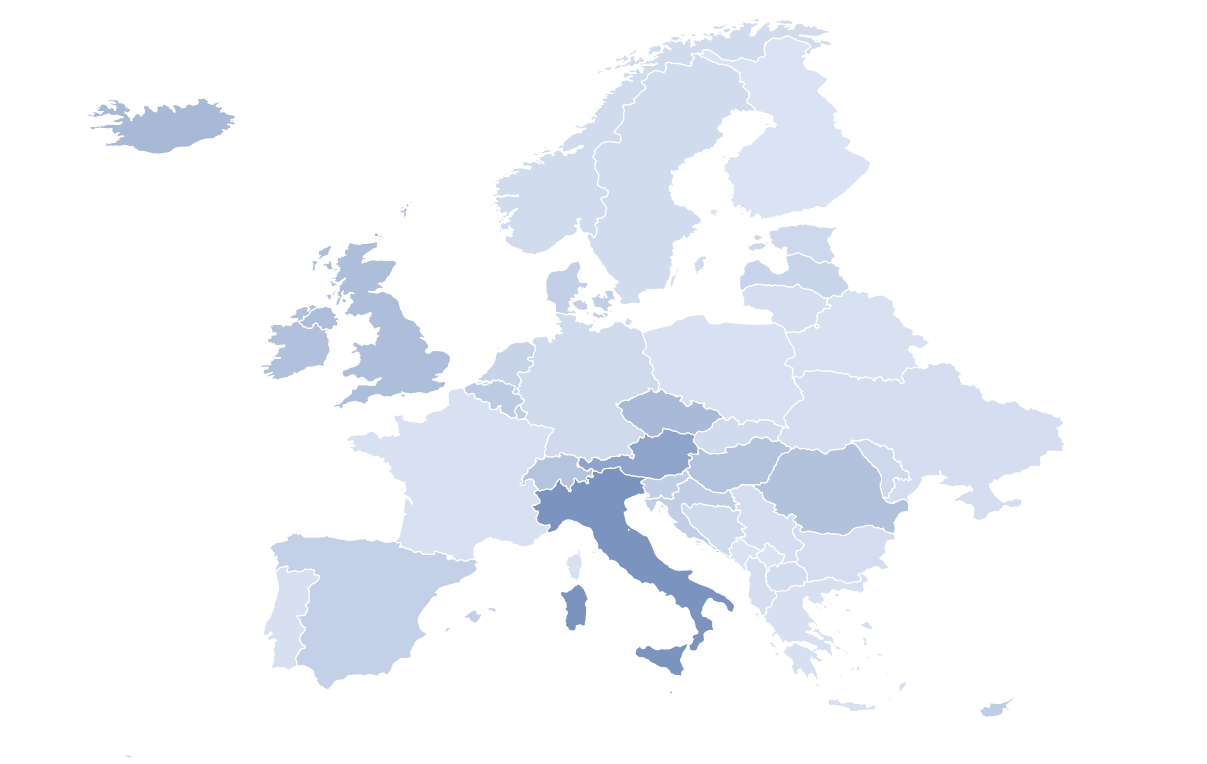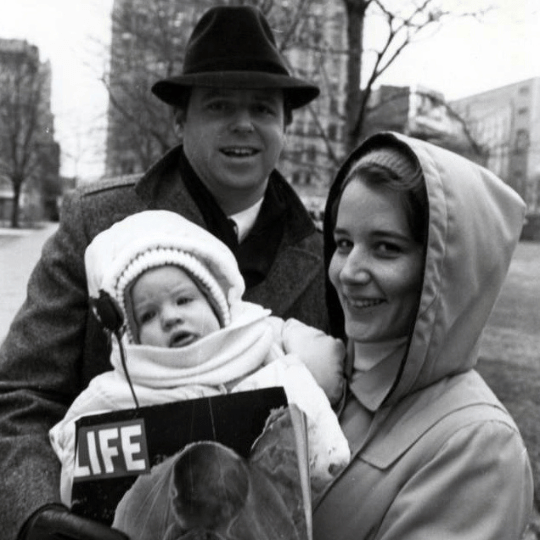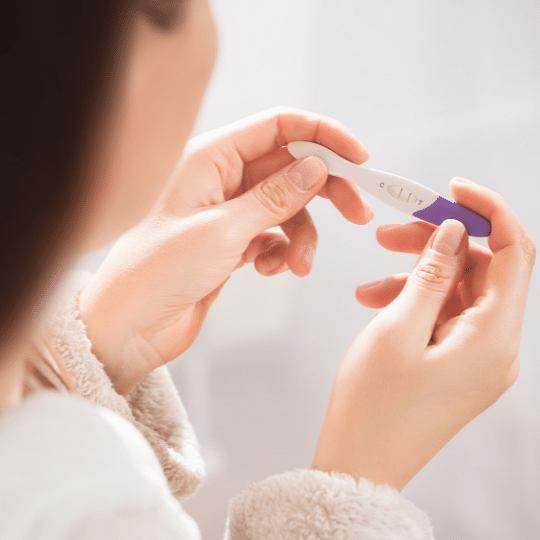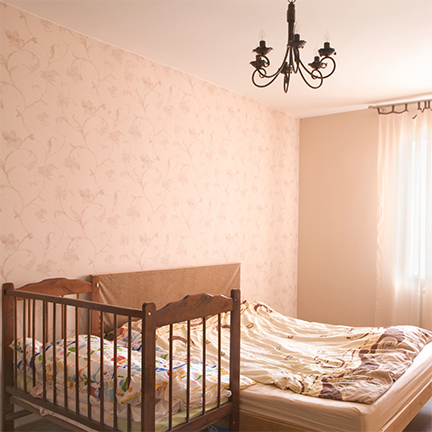Displaying items by tag: Best of Heartbeat Fall/Winter 2021
Salutamu, bomba!
by Jor-El Godsey, President
Heartbeat International
Magnificent Malta and sensational Sicily were international destinations in the final quarter of 2022. It was a joy to visit, firsthand for the first time, the important work of Life Line Network pregnancy help outreach including a pregnancy center and maternity home.
Sensational Sicily served as host for the 2022 Movimento per la Vita (MPV) annual conference that in turn, hosted Europe’s One of Us gathering. Along with connecting with our long-time friends at MPV came an opportunity to hear from and network with leaders from around Europe.
The dramatic changes in U.S. laws with the overturning of Roe v. Wade now make the United States able to restrict abortions more like Europe has done for decades. However, this puts more impetus on local pregnancy help center (PHC) service locations. Heartbeat has begun replicating a 2021 U.S. study of PHCs per capita (500K population) with an examination of the Europe PHC location distribution. The map below is an early representation of what we know about the density of PHCs in Europe. The darker the color of the country, the more PHCs per capita in that country.

As you can see, there are many opportunities available to serve in Europe through pregnancy help so that every woman has compassionate care and practical support available so that she never feels abortion is her only option. More detailed information on this topic will be available soon for Europe just like our White Paper, Pregnancy Help Centers (PHCs) in the U.S.A. - Room to Grow.
The Fruits of the Last 50 Years
by Peggy Hartshorn, Ph.D., Board Chair
“Let us not become weary in doing good, for at the proper time we will reap a harvest if we do not give up.” Galatians 6:9
As we end the 5 decades when the Roe v. Wade decision “ruled” how abortion would be dealt with in our country – both on a personal level and in our laws, society, and culture – we’d like to take this moment to look back on that Roe-world. My husband and I were witnesses of it all.
I reflect here at those fifty years and the damage left behind, but also reflect on how God has brought forth good out of the evil. Because He has, we can all Take Heart!
In hindsight, we can all see the carnage left by Roe, probably at least 50 million abortions (an average of about 1 million per year) in the US, with not only the babies as victims but also their mothers, fathers, and families, plus all those who were complicit either through participating some way in the abortion or by standing by and doing nothing. Abortion became, and still is, a big, money-making business.
The carnage spread around the world as the US exported, through the United Nations and through our popular culture, the “abortion mentality.” We funded, with our tax dollars, population control and abortion worldwide, and we still do.
However, at the same time, God’s people stepped up in every area of life in our society and worked unceasingly to fight the abortion juggernaut and “overturn Roe.” That was finally accomplished, of course, in the Dobbs decision on June 24, 2022, through the grace of God and the work of the amazingly creative “movement” that also grew and developed over these 50 years.
Just to clarify, the Roe v. Wade decision, handed down by the Supreme Court on Jan. 22, 1973, essentially said that abortion as a choice was somehow covered in a “right to privacy” (that was not written down in our Constitution). It said that abortion was “between a woman and her doctor.” It could only be regulated somewhat, but only for the woman’s health in the second trimester, and, in the third trimester it had to be allowed for the “health” of the mother. A companion decision, Doe v. Bolton, extended that to “mental health” so, essentially, abortion was legal during all 9 months of pregnancy.
At first, pro-lifers who had begun to form into groups and get involved in educational and political efforts during the 5 years prior to Roe (when activists were trying to pass laws legalizing abortion state by state) were devastated. It seemed that we could do nothing to stop abortions. The number of abortions surged, and infant adoptions (the primary choice in an unexpected pregnancy for unmarried women before Roe) dropped dramatically.
But the good news is that the pro-life movement began to develop dramatically after Roe. My husband and I joined the movement with a phone call to our local Right to Life chapter, found in the phone book, on January 22, 1973. Apparently, thousands of other people were motivated to do the same, year after year!
The first strategy proposed to “overturn Roe” was to amend the Constitution with a Human Life Amendment but that proved divisive (even with the growing pro-life movement) and never gained traction in the first two decades after Roe.
Amazingly, creative legal minds (in cities, counties, and states) also began trying to “chip away” at what was at first thought to be a “right” with no restrictions. The first effort that I remember was the Akron (Ohio) Ordinance, passed by a city council in 1978. It included parental notification, a waiting period, rules on fetal remains, and other common-sense provisions. Although it was finally declared unconstitutional by the Supreme Court in 1982, it pioneered other examples of the “incremental approach” to fighting and limiting abortions, including the 15-week limit to abortions in Mississippi (because the unborn child can feel pain then) that eventually was the basis of the Supreme Court’s Dobbs decision that brought us into the post-Roe era.
Meanwhile, during the five decades of Roe, other “arms” or branches of the pro-life movement, developed a laser focus on many other priorities: on prayer, especially in front of abortion clinics, on civil disobedience, on regulating abortion clinics, on education – debates at first, then entire programs and curricula for schools and churches, on websites, social media, and other vehicles of popular culture -- film, music, art, literature, and more!
And I have saved the “best” (in my opinion) for last – the pregnancy help movement! The five Roe decades brought to life all of YOU reading Take Heart! You are an essential part of one of the 3,000 pregnancy help centers across our nation that are now saving thousands of babies and mothers per week from abortion, offering love and support, offering hope and healing to those who have had abortions, providing for the health and safety of new families, providing pro-life medical care on many levels, housing homeless pregnant women and helping them get “on their feet” again, providing help to trafficking victims, sharing the Gospel, linking to churches, social services, businesses, and “movers and shakers” in your community, and doing even more!!!
Between 1968 and 1973, before Roe, a couple hundred (at the most) pregnancy help centers existed in the USA, thanks to the Lord working through our pioneers – especially through Heartbeat (then called Alternatives to Abortion, founded in 1971 to link and grow this network).
The original housing services were limited (girls were housed in private homes and then small group homes). The centers were small, all volunteer, many operating out of the offices of pro-life OB/GYNs (who had to send urine test samples to laboratories and get back the results in a few days!). Some volunteers manned hotlines and met with girls and women who thought they might be pregnant on park benches and at restaurants. From these small seeds, a mighty network has grown! (Read much more about our growth over these 50 years in The Power of Pregnancy Help: The First Fifty Years)
One of the best fruits of the Roe era, in my opinion, has been the unity developed among Christians called to this work, especially among Catholics (the first to “answer the call” in the late 1960’s and 70’s) and Evangelicals (who joined the movement in massive numbers in the 1980’s). We experience it within Heartbeat and see that we are always better together!
God’s people never gave up and never gave in over the last 5 decades. Some of God’s pro-life warriors have passed into eternity already, but so many others have taken their places, and the work goes on!
Our battlefield has changed post-Roe. Once focused on a national field, we now must include all 50 states, plus our cities, counties, townships, and neighborhoods. We are back to where we were, in one sense, when the battle was raging in the states from 1968-73, right at the grassroots level.
At least one other thing has clearly changed – while pregnancy help centers have been under “attack” since the 1980’s (in the media, by local and national legislators and courts), the attacks have now become more angry and more physical, fueled by fear of the loss of a “right” to abortion and the woundedness of those who have experienced abortion or are part of Big Abortion. And in the midst of it, we should rejoice. It is our effectiveness that makes us a target, and the enemy has certainly taken notice.
So Take Heart as we continue to serve those taken in by the lie of abortion because in many ways, our work is beginning again.
“Rejoice in hope, be patient in tribulation, be constant in prayer.” Romans 12:12
Katelynn's Abortion Pill Reversal Story
Watch as Katelynn shares her reversal success story.
We found out we were pregnant on Christmas day. At first we were really excited! It was the most amazing Christmas gift we could ever have. At the same time, it was really scary because we have other kids we needed to care for. I had lost my job and my husband was struggling with his business. I just couldn’t see how we could possibly feed and care for another child.
My husband said he would support me whatever my decision and my decision was that I needed to abort this baby. I talked to Planned Parenthood - they seemed so knowledgeable and I thought I just needed to push through and get it done quickly; that would be the easiest way. That was a big mistake.
I took the first pill. All that night, I was awake. I knew in my heart that what I had done was just wrong. “Is it too late? Can I do something else?” I Googled what to do if you want to reverse an abortion and that is when Heartbeat International came up.
While I waited for my appointment the Abortion Pill Rescue® Network helped schedule for me, I was just praying that there was still a Heartbeat... and there was!
Aubrey Lynn was born August 24 weighing 8 pounds and one ounce that included 10 sweet fingers and 10 cute little toes! We know she is going to have a great future. She has parents who love her. God sent her to us and I think she is going to do amazing things!
Interested in helping more women like Katelynn? Visit hbi.life/socialgive to give today.
Why Self-Care Matters for You
by Tracie Shellhouse, MCLC, LAS
Vice President of Ministry Services, Heartbeat International
Pregnancy help is a movement that needs to be particularly thoughtful about self-care. Not only do those we serve need to be supported in loving themselves, but also those serving. As we see again and again, the best way to teach is by example.
When we love ourselves and those we serve with well, we encourage clients to do the same. After all, Jesus said, “By this all people will know you are my disciples, if you have love for one another.” (John 13:35)
Mark 12:31 goes on to tell us to love others as we love ourselves. Servant leaders must take care of themselves to take care of others. So how exactly can we practice what we preach?
HALT
No, not just stop, but be aware of these four roadblocks to living life fully. Nothing is easy when you’re Hungry, Angry, Lonely, or Tired.
Here are ways to make sure you’re addressing these four key areas of concern.
Try not to let yourself stay...
Hungry – Eat well, take a lunch, and have ready-to-eat snacks on hand. It sounds easy, but it’s too easy to neglect these simple things, and when you’re hungry, you’re not prepared to serve well.
Angry – Take time for reflection. Determine why you’re angry, put it into perspective, and resolve or release that anger.
Lonely – Prayer partners or a personal prayer chain can be great for staving off loneliness. Take quiet time with God, keep an encouragement folder, and make sure to connect with family, friends, a mentor, or whoever makes you feel loved.
Tired – Do your best to keep good sleep hygiene. Nap, work offsite for a scenery change, and be sure to get some exercise in your day. Even taking an extra walk can help energize you during the day and help you sleep better at night.
Once you’ve addressed what made you HALT, look forward to the next moment and plan ways to rejuvenate and celebrate. Make sure you’re rejuvenating by taking planned breaks for quiet time, making your space restful, taking advantage of books, podcasts, or hobbies, and keeping yourself well. If you’re in a decision-making position at your organization, it’s worth considering making sure there’s a paid prayer day every so often, that you and your staff can arrive late or leave early on occasion as needed, that meals together are prioritized, and fun days and guest speakers are a part of the fabric of the organization.
To celebrate, reward yourself when you reach a goal with a craft, a new book, a class, whatever makes you joyful. For others, celebrate however you can with unexpected gifts, catching them doing great things and highlighting them at meetings, and just generally surprising your staff or peers by celebrating who they are.
In order to follow God’s command to love our neighbors as we love ourselves, we need to make sure we care for ourselves well. Otherwise, how can we possibly love others?
Pregnancy Help Organizations = Reproductive Health Care Providers
by Andrea Trudden, Vice President of Communications & Marketing
Heartbeat International
Have you heard the term "Reproductive Health Care Provider" before? If you are like me, the phrase brings to mind "Reproductive Rights" and therefore I automatically think of Abortion Facilities. But I would be wrong.
As a pregnancy help organization, you provide reproductive health care through a variety of means for women: abstinence education, pregnancy tests, limited ultrasounds, and in some cases, STI/STD testing and prenatal care. We are blessed to have healthcare professionals on staff or volunteering at pregnancy centers across the nation, using their God-given gifts to help the mission and care for women at one of the most delicate times in their lives.
This nuance of language is important as we navigate new waters that are sometimes putting pregnancy centers in harm's way through abortion-related violent extremism.
Leveraging the label "Reproductive Health Care Provider" properly appropriates language that actually applies more to us, who discuss all options, than those who only favor abortion. In fact, the Department of Justice (DOJ) identifies pregnancy help centers as "Reproductive Health Care Providers" which empowers them (the DOJ) to do more to protect you from threats of violence under the FACE Act.To pull from our Protect Your PHO page:
FACE Act
The Freedom of Access to Clinic Entrances Act (“FACE Act”) likely applies to your center and could be a very powerful tool in dealing with protestors. The FACE Act prohibits violent, threatening, damaging and obstructive behavior toward anyone obtaining or providing reproductive health services. Violators of the FACE Act could be fined or even imprisoned. The Act also provides civil remedies to the victims, including compensatory and punitive damages, as well as injunctive relief. The FACE Act provides for statutory damages, making it even easier to recover money from protesters who violate it. If protesters outside your clinic attempt to block or impede access to the clinic, to intimidate your clients, or cause property damage, please contact Heartbeat to discuss your options. We have been informed that from the FBI's perspective, pregnancy help organizations are covered under the FACE Act.
It is important for us to be aware of what laws exist that we can use to help protect our organizations and push back against violent extremists. While we are glad that the physical attacks against pregnancy help organizations have lessened, it is important that we remain vigilant and have a clear understanding of our rights.
The work we do is good. Our clients know it, our supporters know it, and we know it. Keep up the life-changing work you do!
Practical Tip #1: Review Protect Your PHO with your staff and Board.
Practical Tip #2: Sign up for tomorrow's webinar - The "8Ds" of Risk Management (October 12, 2022 at 12pm EST), presented by Darin J Goodwiler MBA, CCEP, Samaritan's Purse VP of Compliance and Risk/CCRO. In this webinar, you'll learn the methodology of a risk management assessment that measures and evaluates risks to people, facilities, infrastructure, internal controls, and reputations. This thorough assessment has been taught for 30 years and will provide you with an effective framework to help you ensure that you have all your bases covered to keep your organization protected!
Call It What It Is
by Dr. Joe Malone, PhD, CFE, LWMC, CPT
A former student of mine and I wrote a book that came out in 2018. In it, we outlined many of the damaging effects of hookup culture. From the research of others (and there are too many to name here) these are some of the low lights we discovered.
First, college women’s, but not college men’s, depression symptoms increase as their number of sexual partners in a year increase. Second, research shows that women take part in this behavior even when they feel uncomfortable doing so. Next, men especially overestimate women’s comfort with hookups. Only 32% of men said they would feel guilty about having intercourse with someone they just met compared to 72% of women. In addition, the percentage of women feeling guilty over hooking up was over twice that of men, as women tend to seek more emotional involvement in sexual encounters than men do. Then this - many young adults and again, especially women, feel compelled to take part in hookup culture. Lastly, most times alcohol is involved. In a study of 118 freshman female college students, 64% of the hookups involved alcohol use. It appears that alcohol is usually required to make especially females willing to engage in sex with someone they don’t really know.
If all of that isn’t alarming enough, let’s finish this only partial list of the negatives with two extremely big ones. Around 80% of sexual assaults on campuses occur during a hookup. In the last 15 years the prevalence of sexual assault against women on college campuses has motivated campus authorities to decry what they identify as rape culture. They are justifiable in doing so as any sexual assault is one too many. At the same time, these same authorities say nothing against hookup culture and actually send a strong non-verbal message through the way orientation is handled with condom distribution and instructions about the student Health Center for STD treatment. This affirms, in reality, that they are expecting college students to be sexually active and that this is just part of the college norm. But, when we look at the above cited statistics on college campuses these days, hookup culture is for all practical purposes fueling rape culture.
As already mentioned, a major harm of hookup culture is of course, STDs. Largely because of hookup culture-promoted promiscuity, STD rates have been skyrocketing. They hit their highest levels ever in 2015 and continued to climb. Presently, one in two sexually active people will have an STD by age 25. The 15 to 24 age group makes up 53% of the gonorrhea cases and 65% of the cases of chlamydia. Once again, STDs are more dangerous for women. Currently HPV is the most common STD in America. Both men and women can get HPV, but women are 125% more likely than men to have HPV develop into cancer. The CDC states that a female’s anatomy can place her at unique risks for STD infection in comparison to a male.
As an example, one of my students who I had in class in 2007 gave me permission to share her story. She was a somewhat typical sorority sister who drank and was sexually active. Without realizing it, she contracted HPV. She married after college and had two little boys. About eight years out of college she found out that she had cervical cancer and had to have everything, but her ovaries, removed. It was a very scary, possibly life-threatening experience for her, and she felt fortunate that she and her husband had completed their family before she had to have a hysterectomy. There are many more harms and related heartbreaks that we could list here.
I recently listened to a podcast called Just Sex that I found very curious and even disturbing. The promotion said that it concerned hookup culture on college campuses. One of the first statements it made was that there are certain ideas that send the media into a panic, one of them being hookup culture. The inference was that hookup culture is routinely demonized by the media when it is really not that big of a deal and the panic is unjustified.
From there it went into an interview with the author of a book on hookup culture. What I found curious, and quite frankly disturbing, was that from that point on, despite the opening expectations that hooking up is just what young people do these days and that it is normal human behavior, nearly every observation of it showed how negative and unnatural it is, with so many demonstrated harms. The harms being especially hurtful to young women. As a matter of fact, they flat out stated hookup culture does not serve women well. This is where I could find complete agreement, because I believe hooking up fundamentally goes against the woman’s sexual nature.
As I listened, I found their seeming approval to be paradoxical. It soon became clearer though why this might be. They pointed out that hookup culture had come from the 1960s Sexual Revolution and feminist movement. (I had a suspicion that anything that originated with those movements would not be criticized by these two people for deeply held, shared political reasons.) They went on to discuss many, many negative effects of hooking up. For instance, hookup culture says you should be embarrassed for having feelings and feel weak for wanting connection. The author stated that hookups are decidedly not about finding any kind of romantic connection. They had an example interview of a young woman who felt that she was being used in hookup culture, but she also felt she had no choice other than to be used. They stated that the worst thing you can be called in hookup culture is not a slut or even a prude, but you must avoid at all costs being labeled desperate. They also stated that hookup culture demands carelessness, rewards callousness, and punishes kindness. And the misery of living in hookup culture does not end there. They stated that it is important that hookups be meaningless. In fact, ironically, and nonsensically in a normal world, they stated that people generally will have sex with people they don’t like, and not have sex with people they like. They said loving behaviors and mutual respect are to be limited to relationships. A concluding thought was if a woman wants to be respected, she must either opt out of hookup culture altogether or expose herself by hooking up for a period where she just accepts the disrespect.
The book was published in 2017 and the interview was done around that time. At one point during the interview the author did characterize hookup culture as “toxic.” Even so, in this 2021 update to her research to see how the pandemic may have affected conditions, instead of hookup culture being described as the generally hurtful and heartbreaking phenomenon that it is, and calling for a movement against it, it was stated that students in 2021 just want safer, more accountable, and more pleasurable hookup experiences.
The concept of the entire validity of hookup culture was still not questioned or challenged. To me, with all the emotional/mental, as well as physical health problems that hookup culture generates, especially for young women, it would only make sense to build a movement back to romance.
In my own personal research that I conducted in 2019 and 2020 on 437 college students at a large Southeastern University, I found that 60% of the men wanted no part of hookup culture, and 80% of the women wanted nothing to do with it. At the same time, 97% of both sexes said that they wanted more romance and real love in our society. Again, maybe it is time for a Romance Revolt in which young adults unhook from hookup culture and find real love! This would be in direct contrast to what right now many young adults find themselves in, what should be more accurately labeled “hookup hell” on campuses around the world. After viewing all of the damage and destruction caused by hookup culture itself, lets call it what it is - Hookup Hell -and strategically learn to avoid it (like COVID) especially by young women who deserve far better!
Dr. Malone holds a Ph.D. in Health and Human Performance with a specialization in sexual wellness. He has presented at Vanderbilt and Princeton as well as other major universities. Joe served on the CDC Initiative for STD Prevention for Tennessee. His wife of 44 years Jody and he founded the nonprofit Sex IQ: https://www.sexiq.org/
Question from the reader: Is there a way to make sure that there will always be even one resident in the house? Sometimes a month goes by and my house is empty. Am I doing something wrong?
 There has been quite a bit of buzz around this topic since the beginning of the COVID-19 Pandemic. Ministries across the country have found themselves on vacillating ends of the spectrum between empty and full houses with burgeoning waiting lists. So why the variance?
There has been quite a bit of buzz around this topic since the beginning of the COVID-19 Pandemic. Ministries across the country have found themselves on vacillating ends of the spectrum between empty and full houses with burgeoning waiting lists. So why the variance?
I recently spoke with homes from different regions of the country, each with varied programming models, ministry models, and eligibility criteria. I found that the homes with low occupancy rates (For the purposes of this writing, “low” will be less than 25%) repeatedly described their experiences of receiving calls from women in the community inquiring about their home or even interviewing some women, however, these women did not meet the criteria to be eligible to move into the home. Reasons ranged from past or current drug use, criminal record, previous pregnancies, previous children removed from care, children currently in care, or perhaps a generally poor attitude. Needless to say, this can be an exhausting daily merry-go-round for ministries.
Question from the reader: Our search for staff has been difficult. We’ve come up empty after months of looking and getting desperate. What do we do?
Great topic of discussion here. First, I’ll share that you are not alone. This is the most common place of exasperation among maternity housing ministries that I hear of on a regular basis! Several factors may play into this, chief among them being our high rate of unemployment nationally at this time. Most communities are facing labor shortages with ministries not being any different.
So, what to do to keep the ship afloat during the storm? While we have a shortage in labor, we ironically do not have a shortage of unpaid labor in most communities! My recommendation is to make the most of this season to build a first-class volunteer program in your ministry. A thriving volunteer program can bolster every aspect of your ministry from recruitment, evangelism, programmatic operations, and especially development/fundraising.
Keeping Our Eyes on the Joy
by Cindi Boston-Bilotta, Vice President of Mission Advancement
Heartbeat International
I’ve been a part of the pregnancy help movement for 27 years. 20 years of that was spent starting and running a pregnancy center in Missouri. Being in this ministry, I’ve had the joy of holding babies who almost didn’t make it, and the sorrow of not knowing if others had. Now, in my role at Heartbeat as the Vice President of Mission Advancement, I get to describe the miracles of life that you are a part of.
I love this ministry. I love seeing and sharing with folks who want to support Heartbeat and the Abortion Pill Rescue® Network.
We have a lot to celebrate in our work. We get to rescue moms and babies from the travesty of abortion. We help mothers find a way to save and support their babies. We make sure families have the support they need to grow holier, happier, and healthier.
What’s not to love about our work?
Reflecting on the 18 Years of Option Line
by Nafisa Kennedy, Director of Option Line
Earlier this month, Option Line celebrated their eighteenth birthday! It's exciting to think that some of the first callers to Option Line could be parents of children who may be graduating high school this year.
Just like over 18 years a child develops into a young adult, Option Line has changed a lot over the years in some amazing ways.
When I arrived at Option Line nearly fifteen years ago, we were a developing, yet still relatively small operation. We were answering calls and emails 24/7, but had just started taking on AIM Instant Messenger during 3 shifts per week. We had a paper schedule posted on the bulletin board each week. Nobody worked remotely-consultants would often come to work at 9pm in their pajamas so they could get in bed as soon as they returned home at 2:30 in the morning.



